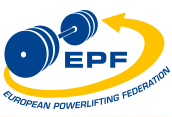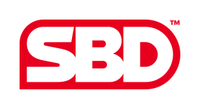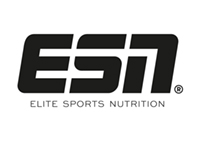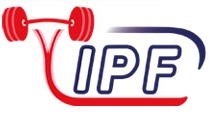WOMEN'S POWERLIFTING
Please click once again to open the documents:
You’re a girl right? Here´s what you need to know to get started in powerlifting ….
Many people, who are new to powerlifting, especially women and girls, may feel intimidated by a world with which they are not yet familiar. A world filled with well-muscled men wearing singlets. Chalk. And lots of grunting! But it’s not just the men who are high achievers at this particular sport: women are also making waves in the powerlifting world.


Lifters like Larysa Soloviova from the Ukraine and Natalia Salnikova from Russia are giving incredibly inspiring performances at an international level.
Powerlifting is much more than a workout in the gym, although the gym is the origin of the sport. Powerlifting is training for a specific and simple purpose: to improve the most you can lift in 3 disciplines. In a world obsessed with beauty, fitness, and body image, powerlifting is refreshingly inclusive. When it comes to competing, the range of lifters and their strength, age and experience is wider than you may think.
But can I do it?
If you can squat to just below parallel, touch the bar to your chest when benching, and perform a deadlift off the floor then you can compete in powerlifting.
The absolute minimum amount of weight a competitor needs to be strong enough to lift is an empty bar, plus the collars. This equals 55 pounds, or 25 kilos. Then there are the plates used in competitions, which weigh 15 kilos each. The plates will bring the bar to a more ideal position - about nine inches off the floor - and the weight up to a total of 55 kilos, or 121 pounds.

Am I too old? Too young?
Competitions are organized by gender, weight and age. Age groups are usually divided into Sub Juniors, aged 14 to 18, Juniors, aged from the year in which you turn 19, to 23, and Masters from from the year in which you turn 40. Everyone can compete in Open competitions. And there are many young teenage lifters competing. Equally, there are many older female lifters well into their 70´s and 80´s!
If you are a Sub Junior, Junior, or a Masters lifter, you can register for Open competitions as well, and compete in two age classes. This increases your chances of winning a medal and if you register for two classes the greatest amount of weight you lift in each lift will count towards both.

What about my size?
In powerlifting, strength and size is embraced, no matter how big or small you are. And you will see all shapes, sizes and ages competing in powerlifting. You will never feel out of place. People who share similar body weights are grouped together and weight classes range from up to 43 kgs for juniors and sub juniors to over 84 kgs in all classes.
You too can be a winner!
Placing in powerlifting isn’t just dependent on how strong you are, but how you perform against the competitors who showed up on that day. Placing is determined within the age and weight classes. Anyone can win in the sport of powerlifting, but you can’t win if you don’t sign up and give it a go!

But do I need a lot of gear?
Powerlifting is divided into two categories, Classic and Equipped. Equipped powerlifting competitions include additional wearable equipment to help the lifter. But, if you´re starting off in the sport, this is what you will need to compete in a Classic event. Wrist wraps and belts are optional.
- A non-supportive lifting suit
- A T-shirt to wear underneath
- Long socks for the deadlift
- Flat shoes
- Loose fitting cotton underwear
How do I get started then?
Hopefully, by now, you´ll be wondering how you get started and your first step is to ask at your local gym for guidance and recommendations. And do look on our website or Facebook page for new information and articles.
If you´re already familiar with squatting, benching, and deadlifting, then working on your own, with a partner, or with a coach are your options. If you’re new, we recommend working with a trainer in person, either one-on-one or in a small group setting, to get the personal attention you’ll need to get familiar with the mechanics of the lifts.
Next, find an event! If you’re not ready to take part yet, you can get familiar with competitions by watching from the audience first. Many of the IPF and EPF events are televised so you can watch from home on Facebook or Youtube. Watching what happens at an event, from how the lifters execute the lifts to how the judges work, will help you decide when you’re ready to compete.

So, are you ready to get going?
The powerlifting community is incredibly welcoming. While strength, age, and skill levels vary greatly, there’s still a sense of togetherness as everyone is united towards a common goal. So, what are you waiting for? Ask at your local gym now for more information on best places to train, where competitions are taking place, and how you can start training to competition level!
Summarised from an article by Jennifer Vogelsang Blake. Follow this link to read the full article https://www.girlsgonestrong.com/blog/articles/need-know-get-started-powerlifting/











